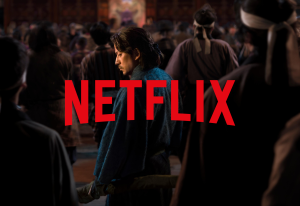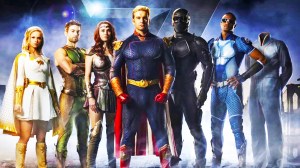Reboots and remakes are becoming a bane and scourge of the Hollywood machine. Symptomatic of the dearth of good, original ideas of the current power players, there is a lot to be said about big movie studios’ inability to produce new stories.
Videos by ComicBook.com
But not all reboots are created equal. In fact, some of them are pretty damn good.
And yet it’s hard to pinpoint what exactly separated the good ones from the bad. Is it how true they stay to the source material? Or how they completely forgo it? Do they subvert the knowledge and popularity of what people already know? Twist well-trodden story beats?
It’s hard to say. There are many ways a remake can update familiar storylines without being beholden to them.
At the heart of every single possibility, one fact remains: it must be entertaining. Otherwise, what’s the point?
Here are some of our favorite reboots and remakes, and why they work so well.
True Grit
Saddle up, pilgrim, because we’re starting with a classic that replaces the Duke with the Dude.
Acclaimed filmmaking two-headed monster the Coen Brothers decided to update this ’69 John Wayne classic in 2010 after years of applying Western conventions and techniques to films like Blood Simple, Raising Arizona, Fargo, and No Country For Old Men.
Instead of crafting their own, original story—as they are wont to do—the Coens made True Grit in a way that brought the same story to a new audience with their own contemporary trademarks applied.
But the film wasn’t quite a reboot of the old Wayne-starring Western. It was actually a closer adaptation of the novel which preceded it.
The newer movie put a greater focus on Mattie Ross, the cranky young woman who wants to bring justice to the outlaw who murdered her father. This allowed the Coens to apply their trademark deadpan humor to many otherwise serious and tense scenes.
True Grit was well received both critically and among fans, earning box office success and ten Academy Award nominations. It’s another beloved entry in the Coen Brothers overall filmography, which itself consists of more hits than misses.

Dawn of the Dead
Before Zack Snyder became the comic book adaptor that he is today—before 300, Watchmen, and his work in the DC Superhero Universe—he made his mark with the reboot of what many consider to be George Romero’s best zombie film.
In Dawn of the Dead, viewers can recognize the trademark visual style that would be honed in later Snyder movies, but it’s accomplished with raw passion in this film in a way that could only be done in a horrific survivor story.
Writer James Gunn perfectly adapted the screenplay for modern sensibilities, matching the sheer terror and folly of survival in a world dominated by zombies with desperate humor and disparate personalities. A lot of his trademark banter and interpersonal relationships are on full display here, matched well with Snyder’s unique visual flare.
The introduction consists of a mundane life on the brink of an outbreak, being derailed by the sudden influx of zombies. Intense action sequences follow as Ana makes it to a shopping mall along with another group of survivors.
Everyone has their own motivations and most of them go against their fellow survivors. It’s a microcosm of the complete breakdown of society, examined through a lens that only Snyder and Gunn could imagine.

Scarface
The remake of the Paul Muni classic is a cultural staple and cinematic masterpiece. Brian De Palma’s twisted take on the American Dream took the original source material and updated it as a commentary for the times.
The excessive violence and rampant drug use pushed a lot of boundaries for filmmaking at the time; instead of glorifying it as an action film it tended to showcase the horror of the actions. When it was first released, it was originally given a XXX rating for the violence and drug abuse.
30 years later Scarface remains relevant and is considered one of Al Pacino’s greatest achievements as an actor. The film is also noteworthy for giving Michelle Pfeiffer her first big role, as well as putting Oliver Stone on the road toward becoming a Hollywood power player.
But the film itself has aged well, a savage interpretation of desire and drive and the will to succeed against the backdrop of a crime-soaked Miami. It shows the towering highs and lowly depths of one man in his journey to find success, and serves as the blueprint for what many crime movies would follow for years to come.

The Mummy
No, we’re not talking about the upcoming Tom Cruise movie. In fact, it would have to do a hell of a lot to surpass this Brendan Fraser and Rachel Weisz classic.
Stephen Sommers story of Rick O’Connell and Evie Carnahan’s accidental uprooting of an ancient curse could be considered a standard action affair, but it sticks to the genre conventions and tropes so well and really sets the stage for the disaster-porn era that would follow.
Before then, a lot of action-adventure affairs would be contained as personal affairs, with huge set pieces that were only relevant to the characters at hand. The Mummy introduced global stakes to the equation and added some awesome special effects to help establish the tone.
Sure, it might be a straightforward action affair, but few films in the genre have the humor, pacing, and heart of the first Mummy film. And for rebooting the original 1932 Boris Karloff-starring horror movie, it twists the story in a new way and updated it for (at the time) contemporary standards.
Plus, it’s arguably Brendan Fraser’s best movie, and that right there says a whole lot.

Fargo
OK, you got us. This isn’t a movie. It’s not even a remake. A reboot? Eh, tough to say. Sequel? I guess?
But Noah Hawley’s television take on the Coen Brothers’ classic is definitely worth a placement on any list where you can maybe make a loose argument for its belonging. And because Fargo is all of these things and none of these things, we’re going to include it.
The first season stars Martin Freeman as Lester Nygaard, an unloveable jerk devoid of luck until a sociopathic hitman, played by Billy Bob Thornton, gives him the advice he needs to make his own way. Allison Tolman plays the police deputy on a mission to bring him down, named Molly Solverson.
Freeman and Tolman’s characters loosely correlate to William H. Macy and Frances McDormand characters from the original film respectively, but it’s not a direct retelling of the film.
Instead, Fargo the show serves as a loose reinterpretation of the classic film mixed with many other aspects of different Coen Brothers films. It’s almost like a crossover between Fargo and No Country For Old Men, with Thornton’s character Lorne Malvo serving as a charismatic Anton Chigur.
The second season continues those themes, incorporating some elements of Burn After Reading and Raising Arizona. It’s definitely worth a watch if you haven’t already devoured every single episode—especially with the third season set to premiere soon.

Superman
Jerry Siegel and Joe Shuster’s historic contribution to comics was adapted as a televised serial, a film/TV show, a radio program, an animated series, and a broadway musical over the course of 40 years after his creation.
And then Richard Donner teamed up with Christopher Reeves for what many consider to be the greatest adaptation of the character to ever appear on big screens. Superman was the perfect blend of humor and heart mixed with heroics that more often involved daring rescues than it did fisticuffs.
The movie nails the dynamic between alter ego Clark Kent and Lois Lane, played by Margot Kidder. Plus a great performance by Gene Hackman as Lex Luthor—whose time as the mad genius continues to loom over anyone else who plays the role—provides Superman with a great adversary whom he can’t just punch.
It takes the ridiculous camp inherent to superhero stories and applies them with ease, embracing the silliness of brightly colored champions who fall weak at the presence of green rocks, whose perfect disguise is a pair of reading glasses, who can turn back time by reversing the earth’s rotation.
Superman remains a classic superhero movie to this day, even by contemporary standards.

X-Men: First Class
Sure, it’s technically considered a prequel, but given the events of the following films essentially erase what happens afterward it’s safe to refer to it as a “soft reboot.”
After X-Men: The Last Stand pretty much ruined the future of the franchise, it was up to former Guy Ritchie collaborator Matthew Vaughn to fix it.
The producer only got his start directing films after Ritchie dropped out of the Daniel Craig-starring Layer Cake. He went on to adapt Neil Gaiman’s fantasy story Stardust with Charlie Cox, Claire Danes, Michelle Pfeiffer and Robert DeNiro, which was well received, and followed that film up with the adaptation of Kick Ass by Mark Millar and John Romita Jr.
That earned Vaughn the opportunity to take over the X-Men franchise and put it back on track, taking the series back in time and showing how Charles Xavier, Erik Lensherr, and a slightly retconned Mystique meet up and become BFFs before eventually hating each other with world-ending stakes on the line.
The film was a distinct period piece, taking place in the ’60s and serving as the impetus of the Cuban Missile Crisis. It was a uniquely original story, only taking certain elements of previous X-Men films.
Casting Michael Fassbender and James McAvoy as younger versions of Magneto and Professor X allowed them to explore a dynamic only alluded to in the previous movies. And the addition of Jennifer Lawrence pre-superstardom contributed to the chemistry between the leads, with her arc as the most accessible to connect to. It was widely considered the best X-Men film in the entire franchise—until Logan came out earlier this year, of course.









